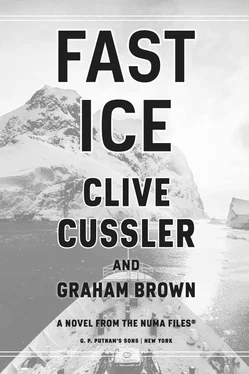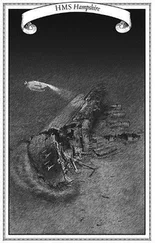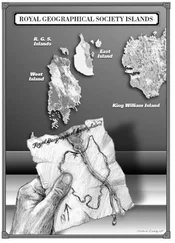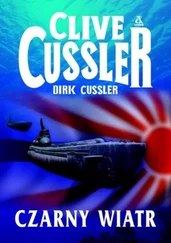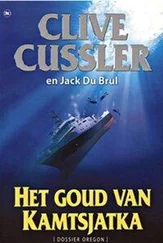“Wonderful title,” Rudi said.
“And accurate,” Yaeger insisted. “You see, the farther out we go, the more we encounter feedback effects and inputs that are not directly related to the algae itself. For instance, as the atmosphere cools, it also thins and loses its ability to retain moisture. Both impacts cause it to be less effective at insulating the planet, allowing even more heat to radiate out into space. By chance, fallen snow and ice are white and reflective. As the snowfall spreads and lingers longer on the ground, we end up essentially coating the Earth in a reflective blanket, causing the sunlight to be bounced back into space instead of absorbed by the dark ground and the equally dark sea. These things all result in feedback loops, meaning the colder it gets, the colder it will continue to get.”
“Snowball Earth,” Rudi noted. “Yvonne’s original theory. Doomsday for humanity. Or close to it. I’m assuming we’d build underground shelters, tap geothermal sources and scratch out a method of survival. But it wouldn’t exactly be a party.”
Yaeger nodded. “In the worst-case scenario, the Earth slowly enters a frozen state, one from which it cannot emerge without a jolt from something large. Either massive volcanoes or some type of surface-heating system reflecting extra sunlight and heat onto the planet or even nuclear weapons and purposeful release of more greenhouse gases.”
“Could you imagine the irony?” Rudi said.
Yaeger shook his head.
“Why is it so quick to take hold?” Rudi asked. “Ice ages normally take thousands of years to get going.”
Yaeger swiveled in his seat to face Rudi more directly. “Under normal circumstances, the glaciers would melt slowly and the algae would start flowing into the sea at a trickle, only becoming a rush over decades or centuries. The algae’s own ice-forming activity would trap it in a mix of slush and brine in the coves and bays that it initially flowed into. New ice would only grow at the margins with the algae itself caught behind that.”
Rudi could visualize that. “Go on.”
“At that pace, it would take hundreds of years for the algae to encircle Antarctica in large enough numbers to have any effect. And based on global ocean currents, it would be centuries more before it reached the northern polar seas, where it could perform the same trick. Ryland is intending to use high-pressure turbines to pump the algae from the glacial lake directly into the ocean at incredible volumes. Instead of a trickle, we’re looking at thousands of gallons a minute. He’s got tankers full of the stuff headed toward the Northern Hemisphere, where they’ll seed the Arctic and the seas above Russia and Canada. And considering his boast, and Yvonne’s background as a biological engineer, it becomes easy to imagine him genetically engineering the algae to grow and spread faster. All which compresses a thousand years of ice formation into a decade or less.”
“What about our ability to destroy it?” Rudi asked.
“First we have to find it,” Yaeger said. “Then we have to figure out how to kill it in massive amounts without poisoning the entire ocean at the same time. On top of that, we have to make sure we got all of it, every single flake, because anything we missed will simply regrow. Realistically, it’s impossible to imagine we could eliminate the algae once it escaped a confined area. It’s like trying to eradicate that damned COVID virus. If you quarantine nine million people who have it and leave one of them out and walking around, all you’ve done is buy yourself time before it flares up again.”
Rudi understood the difficulty. NUMA had recently spent millions of dollars working with the Coast Guard and the state of Florida trying to mitigate the red tides that flowed into Tampa Bay. That was a speck on the map, compared to the Arctic or Antarctic oceans, with calm waters and bases nearby. And even they hadn’t been particularly successful.
There was no point in further conversation. The facts were clear. It would be impossible to put the genie back in the bottle once Ryland let it out. In this case, an ounce of prevention would be worth ten million tons of cure. “We have no choice,” Rudi said. “We have to send Kurt and his team in. My only question is, how do we get them through the storm?”
42
CHINESE FISHING TRAWLER
SIXTEEN HUNDRED MILES SOUTH OF CAPE TOWN
Kurt and Joe stood over a chart in the navigator’s compartment on the Chinese trawler. As the trawler rolled to port, Joe grabbed the edge of the table to hold himself in place.
Kurt pinned the chart down with one hand and then threw the other against the bulkhead to keep himself balanced. When his coffee mug began sliding toward the edge of the table, he released the chart and snatched the mug out of midair before it could throw itself to the deck.
“Nice catch,” Joe said.
“They should make these things with magnets on the bottom,” Kurt joked.
“We’re going to need more than magnets,” Joe replied. “We’re going to need a miracle.”
The chart they’d found was ten years old, annotated in Chinese and not all that detailed. Joe had a straightedge and pencil. Kurt was getting condition reports off a National Weather Service radio bulletin. It was a far cry from the high-tech, real-time system NUMA used, yet the basic question was the same. How do we get there from here?
With Paul and Gamay looking on, Kurt marked the landing zone. “If we’re right, Ryland’s pumping station is here. The last satellite pass before the storm showed two heat plumes. One large and one negligible. We have to assume the large flare is a result of the turbines and the geothermal layer they’ve tapped into.”
Joe measured once, scribbled some numbers and then measured again. Shaking his head, he looked up. “We’re still too far out. Even with the extra fuel we loaded on the Jayhawk and a one-way trip in mind.”
At that moment Zama came in. “How goes it, my friends?”
“Up and down,” Kurt said. “How’s the ship?”
“About the same. My men and the Chinese crew who stayed aboard have shored up all the hatches using two-by-fours and other materials. But they’re nervous. And they don’t know what we’re getting into. Do you?”
As Zama spoke, the trawler rolled with another swell. Kurt switched the coffee mug to the other hand and braced against the opposite bulkhead. “It’s going to get worse overnight.”
Zama didn’t look happy. “Then we’re going to be shipping water,” Zama told him. “It only takes one hatch or port to fail and we’ll have flooding inside.”
Kurt wasn’t about to put Zama and his men in danger. “You’ve done more than enough already. I promise you we’ll get off this boat so you turn back north before the bad stuff hits. We just need to get a little closer first.” He pointed to the map and Joe’s measuring stick. “We’re at least two hundred miles out of range. Can you coax any more speed out of this tub?”
“The diesel is old and running hot,” Zama said. “I can’t risk calling for more power. Losing the engine in this storm will be fatal for all of us.”
“Actually,” Joe said, looking up from the chart, “I was wrong. We have to leave now or abort the whole mission.”
Kurt turned back to Joe. “You just said we’re too far away.”
“We are,” Joe said. “But we’re going to get farther away the longer we wait.”
Kurt knew better than to fence with Joe on something mathematical. He had an engineer’s mind and did numbers like a computer. “Care to explain?”
Joe held out a hand. “Coffee mug.”
Kurt handed it over, and Joe placed it down on the chart on a specific spot. “This is the center of the storm.”
Читать дальше
